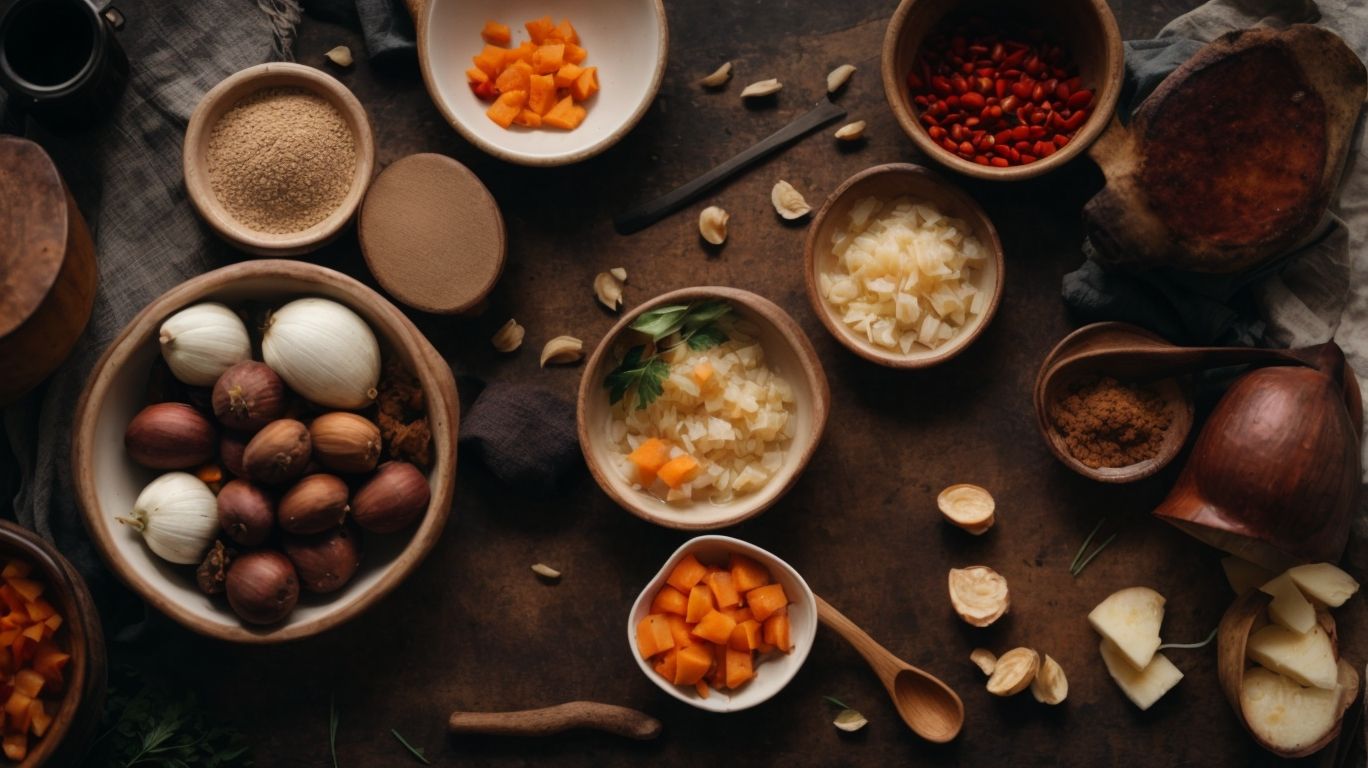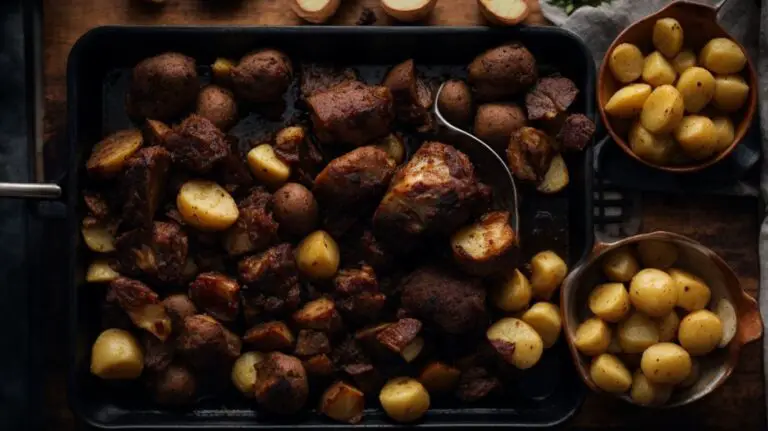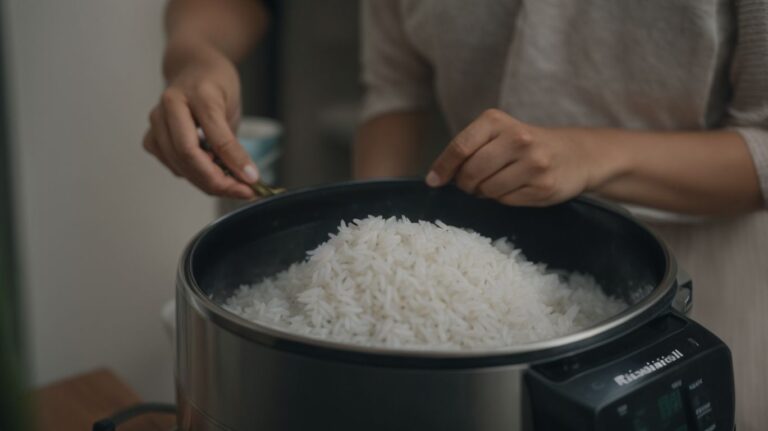How to Cook Yam Porridge?
Are you looking to add a new and flavorful dish to your cooking repertoire? Look no further than Yam Porridge!
We will explore what exactly Yam Porridge is, the different variations you can try, the essential ingredients needed to make it, and the best tips for cooking the perfect dish.
Whether you’re a seasoned chef or a beginner in the kitchen, this article will guide you through the process of preparing and enjoying this delicious and hearty meal.
Let’s get started!
Key Takeaways:
What is Yam Porridge?
Yam porridge, also known as Asaro, is a traditional Nigerian dish that combines yam with a flavorful mix of spices and ingredients to create a delicious and hearty meal.
Originating from the Yoruba people of Nigeria, Asaro holds a significant place in Nigerian cuisine, representing comfort food at its best. The dish reflects the deep cultural roots of Nigeria, where yam is not just a staple but also a symbol of fertility and abundance. Variations of yam porridge can be found across different regions of the country, each with its unique twist of flavors, such as palm oil, smoked fish, peppers, and various seasonings that contribute to its distinct taste profile.
What are the Different Variations of Yam Porridge?
Yam porridge, also known as Asaro, comes in various delicious variations such as the stewed version with chicken, seafood-infused recipes, and vegetable-packed options with a medley of herbs.
Each regional twist on this comforting dish adds a unique touch to its rich flavor profile. For example, in the southeastern part of Nigeria, the use of smoked turkey adds a deep smoky essence, while in the coastal regions, fresh shrimp or stockfish provides a delightful seafood element. For those looking for a vegetarian option, yam porridge can be elevated with a plethora of leafy greens like spinach, kale, or bitterleaf, creating a nutrient-dense and satisfying meal.
What Ingredients Do You Need to Make Yam Porridge?
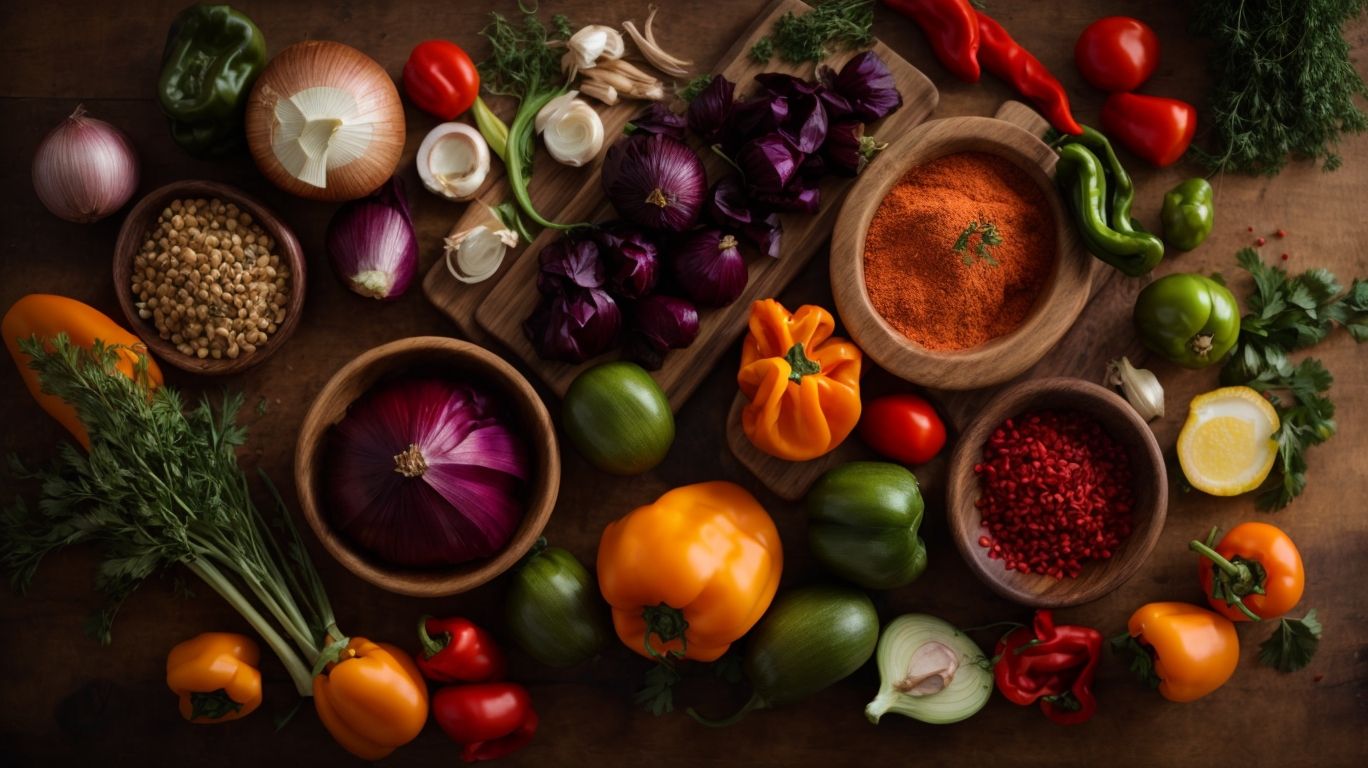
Credits: Poormet.Com – Jeremy Taylor
To prepare a delicious batch of Yam Porridge, essential ingredients like yam, peppers, tomatoes, onions, a blend of seasonings, choice of fish, assorted vegetables, and aromatic herbs are required.
Yam, the key component of this traditional Nigerian dish, provides a hearty and wholesome base. The peppers and tomatoes add a vibrant color and a hint of tanginess, while the onions bring a sweet undertone to the flavor profile.
The blend of seasonings, which typically includes ingredients like garlic, ginger, and bouillon cubes, works harmoniously to enhance the taste and aroma of the porridge. Your choice of fish, whether smoked or fresh, introduces a rich and savory element that complements the overall dish.
Assorted vegetables such as spinach, bell peppers, and okra not only contribute to the nutritional value but also offer a variety of textures and flavors. The aromatic herbs like scent leaves or basil lend a refreshing and fragrant touch, elevating the dish to a delightful culinary experience.
What Type of Yam is Best for Yam Porridge?
When preparing Yam Porridge, choosing the right type of yam is crucial to ensure the dish achieves the desired flavor and texture characteristic of traditional Nigerian recipes.
Yams used in this dish play a fundamental role in determining its final outcome. The choice between the soft, starchy texture of white yams or the firmer, sweet taste of water yams can significantly alter the overall dining experience. White yams, like Dioscorea rotundata, are perfect for creating a creamy consistency, blending effortlessly with the savory flavors of the dish. On the other hand, water yams, such as Dioscorea alata, provide a more solid bite, adding a subtle sweetness to the porridge.
Thus, when selecting the appropriate yam variety, consider the desired outcome of your Yam Porridge. Whether you prefer a velvety, smooth texture or a chunkier, hearty feel, the type of yam you choose will undoubtedly impact the dish’s final taste and consistency.
What Other Ingredients Can You Add to Yam Porridge?
Along with the primary ingredients, enhancing Yam Porridge with Nigerian palm oil, a blend of seasonings, assorted vegetables, flavorful fish, and aromatic herbs can elevate the dish’s taste profile.
Nigerian palm oil, known for its vibrant color and rich flavor, acts as a key component in Yam Porridge, infusing a distinct taste and adding a velvety texture to the dish. Seasonings like cayenne pepper, ginger, and onions bring a depth of warmth and spice, complementing the sweetness of the yams. Assorted vegetables such as bell peppers, spinach, and okra not only enhance the visual appeal but also provide a variety of textures. Flavorful fish options like tilapia or catfish bring a savory element, while aromatic herbs like thyme, bay leaves, and scent leaves infuse an irresistible fragrance into the porridge.
How to Prepare the Yam for Cooking?
Before cooking Yam Porridge, it is essential to prepare the yam by peeling, chopping it into desired sizes, soaking it to remove excess starch, and then proceeding with the cooking process.
Peeling the yam is the first step in the preparation process, as it removes the tough outer skin and exposes the starchy flesh inside. Once peeled, the yam should be carefully chopped into uniform sizes to ensure even cooking. This not only helps in achieving a consistent texture but also ensures that all pieces cook at a similar rate.
Next, soaking the chopped yam in water for about 30 minutes is crucial. This step is important as it helps to remove excess starch from the yam, which can make the final dish too sticky. The soaking process also helps to soften the yam slightly, leading to a creamier texture.
Peeling and Chopping the Yam
Peeling and chopping the yam into uniform pieces is a critical step in the preparation process of Yam Porridge, ensuring even cooking and consistent texture throughout the dish.
When dealing with yams for Yam Porridge, it’s essential to first wash them thoroughly to remove any dirt or debris. Then, using a sharp knife, carefully trim off the ends of the yam to create a stable base for peeling.
Consistency in the size and shape of the yam pieces is key to ensure that they cook evenly. Aim for cubes or slices of similar dimensions to promote uniform cooking. This uniformity not only enhances the visual appeal of the dish but also helps in achieving a harmonious blend of flavors and textures.
Soaking the Yam
Soaking the yam slices in water helps to remove excess starch, improving the texture of the final dish and ensuring that the Yam Porridge achieves the desired consistency.
By soaking the yam prior to cooking, you allow the slices to soften slightly, leading to a creamier and more cohesive porridge. This process also aids in the overall cooking time, reducing the chances of unevenly cooked pieces and ensuring a harmonious blend of flavors. Soaking also helps in enhancing the natural sweetness of the yam, creating a more flavorful dish that is sure to tantalize your taste buds. Implementing this preparation technique can truly elevate the quality of your Yam Porridge to a whole new level.
How to Cook Yam Porridge?
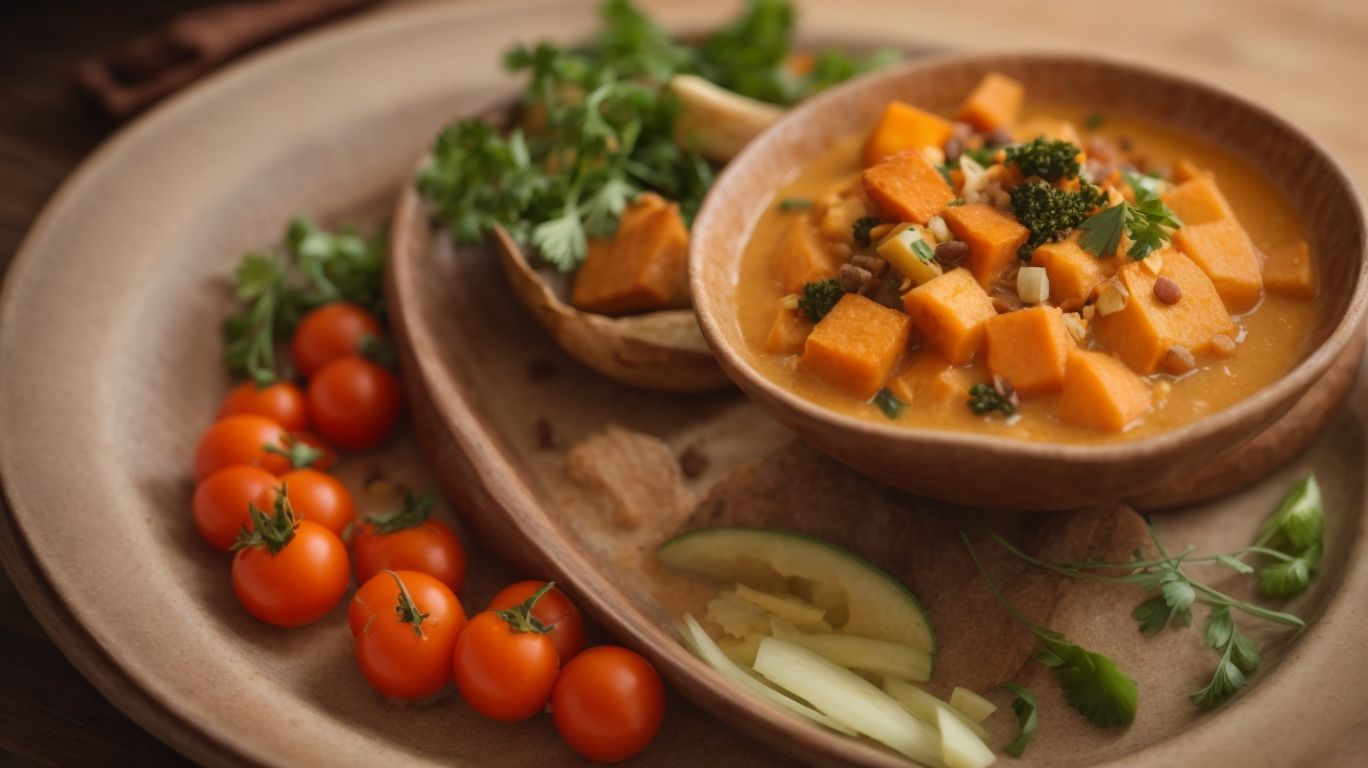
Credits: Poormet.Com – Noah Adams
Cooking Yam Porridge involves a series of steps starting from preparing the base ingredients to simmering them together to create a flavorful and satisfying dish that captures the essence of Nigerian cuisine.
You need to gather your ingredients, which typically include diced yam, onions, tomatoes, bell peppers, and assorted spices such as curry powder and thyme.
- Next, heat some oil in a pot and sauté the onions until they are translucent.
- Then, add the tomatoes and bell peppers, allowing them to cook down and release their flavors.
- Once the base is fragrant, add the diced yam and enough water to cover the ingredients, and let it simmer until the yam is tender.
Season with your preferred spices and adjust the consistency by adding more water if needed. Serve your Yam Porridge hot and enjoy this hearty and delicious meal!
Step-by-Step Instructions
Follow these step-by-step instructions to cook a delicious batch of Yam Porridge that embodies the rich flavors and culinary heritage of Nigerian cuisine.
Yam Porridge is a popular Nigerian dish that combines yam, a starchy tuber, with a savory broth filled with spices and protein-packed ingredients. To start, peel the yam and cut it into bite-sized chunks, ready to be the star of this flavorful one-pot meal. In a large pot, heat some palm oil, add chopped onions, and allow them to caramelize to create a fragrant base for the dish.
Next, season the pot with a blend of aromatic ingredients like garlic, ginger, and chili peppers to infuse the porridge with a kick of heat and depth of flavor. Once the spices are fragrant, add in your yam chunks, followed by some broth or water to simmer the mixture until the yam is tender.
What are Some Tips for Cooking the Perfect Yam Porridge?
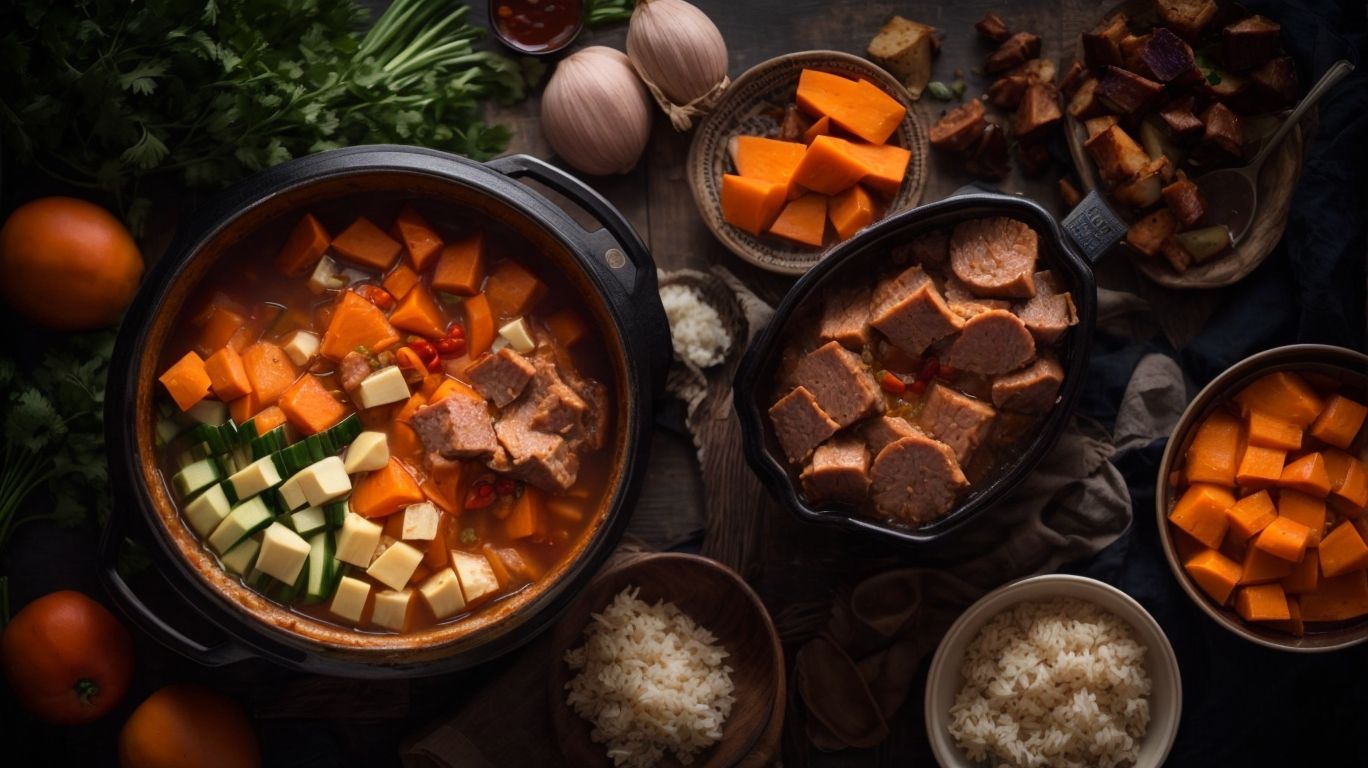
Credits: Poormet.Com – Bryan King
To achieve the perfect Yam Porridge, it is essential to pay attention to factors such as water quantity, spice selection, protein inclusion, vegetable variety, and overall balance to create a nutritious and flavorful meal.
In terms of managing water in your Yam Porridge, it’s crucial to find the right balance. Insufficient water can result in a dry, clumpy texture, while too much water may make your porridge too runny. Adjusting the water level gradually while cooking and stirring occasionally can help you achieve the desired consistency.
Selecting the right spices can elevate the flavor profile of your dish. Consider using a blend of cayenne pepper for a hint of heat, thyme for a touch of earthiness, and bay leaves for added complexity. Experiment with different combinations to find your perfect mix.
Adding the Right Amount of Water
Maintaining the appropriate water-to-ingredient ratio is crucial when preparing Yam Porridge to achieve the desired consistency and prevent the dish from becoming too dry or watery.
Water measurement and management play a significant role in the overall cooking process. The amount of water added dictates not only the texture of the dish but also its flavor profile. To strike the right balance, it’s essential to start with a measured quantity of water and adjust as needed during the cooking process.
Achieving the ideal consistency involves a delicate dance between adding water gradually and allowing the yam to absorb it, ensuring that every bite is flavorful and satisfying.
Using the Right Spices and Seasonings
Selecting and incorporating the right blend of spices and seasonings can significantly enhance the flavor profile of Yam Porridge, infusing the dish with rich aromas and satisfying tastes.
Each spice added to the pot contributes its unique essence, creating a symphony of flavors that dance on the tastebuds. Balance is key when it comes to seasoning; the perfect harmony between heat, sweetness, and savory notes can transform a simple dish into a gastronomic delight.
Whether you opt for the warmth of cinnamon and nutmeg, the earthiness of cumin and turmeric, or the vibrant kick of chili peppers, the nuances in spice combinations can take your Yam Porridge from ordinary to extraordinary.
Adding Protein and Vegetables for a Balanced Meal
Incorporating a mix of protein sources and a variety of vegetables into Yam Porridge ensures that the dish not only tastes delicious but also provides a well-rounded and nutritious meal option.
When crafting a wholesome Yam Porridge, consider adding ingredients such as beans, lentils, or fish for protein-rich goodness. These elements not only enhance the flavor profile but also contribute essential nutrients like iron and amino acids necessary for bodily functions.
The diverse selection of vegetables like spinach, bell peppers, and carrots not only introduce vibrant colors but also offer a spectrum of vitamins and minerals, elevating the nutritional value of the dish. Balancing the macronutrients in this way ensures a balanced diet and creates a satisfying and wholesome meal.
What are Some Common Mistakes When Cooking Yam Porridge?
While preparing Yam Porridge, common mistakes to avoid include overcooking the yam, skipping the soaking step, or improper yam preparation methods that can affect the dish’s taste and texture.
Overcooking the yam can lead to a mushy consistency, robbing the dish of its desired firmness. To prevent this, ensure the yam is cut into equal-sized chunks for even cooking.
Skipping the soaking step may result in unevenly cooked porridge with some yam pieces too hard. Always soak the yam in water for about 30 minutes prior to cooking to soften it. Improper yam preparation, such as not peeling the skin adequately, can introduce a bitter taste. Peel the yam thickly to remove any bitter compounds before cooking. These simple steps can drastically enhance the flavor and texture of your Yam Porridge.”
Overcooking the Yam
Overcooking the yam in Yam Porridge can lead to a mushy texture and loss of flavor, detracting from the dish’s overall appeal and authenticity.
This might happen if the yam is cooked for too long, breaking down its cell structure and turning it into an unappetizing mash. When yam becomes mushy, it loses its natural firmness and distinct taste, compromising the dish’s essence.
To prevent this, it’s crucial to monitor the cooking time carefully and remove the yam once it’s just tender. Optimal cooking techniques include cutting the yam into uniform pieces for even cooking and adjusting the heat level as needed.
Not Soaking the Yam Before Cooking
Skipping the crucial step of soaking the yam slices before cooking Yam Porridge can result in a dish with excessive starch content and an undesirable texture that may not align with traditional recipes.
Soaking yam slices before preparing Yam Porridge is a vital practice that plays a significant role in enhancing the overall quality of the dish. When yam is soaked, it allows excess starch to be removed, resulting in a creamier and more pleasant texture. The soaking process also helps to soften the yam, making it easier to cook evenly and ensuring a consistent bite in every spoonful of the porridge.
By skipping this essential soaking step, the yam may retain more starch, leading to a stickier and less appealing consistency in the final dish. This can deviate from the traditional rich and smooth texture that is characteristic of well-prepared Yam Porridge.
How to Serve and Enjoy Yam Porridge?
Serving and enjoying Yam Porridge is a delightful experience that can be further enhanced by exploring creative presentation options, storing leftovers appropriately, and savoring the rich flavors of this Nigerian culinary delight.
In terms of serving Yam Porridge, consider garnishing it with chopped fresh herbs, a drizzle of palm oil, or a sprinkle of ground crayfish for added aromatic and visual appeal.
To store leftovers, transfer the porridge into an airtight container and refrigerate promptly to maintain freshness. If reheating, adding a splash of broth or coconut milk can help rejuvenate the flavors.
Preserving the taste and quality of Yam Porridge involves avoiding overcooking to retain the natural sweetness of the ingredients and ensuring not to add excessive salt initially for a balanced flavor profile.
Serving Suggestions
When serving Yam Porridge, consider garnishing with fresh herbs, adding a drizzle of palm oil for extra flavor, and pairing it with traditional Nigerian sides for a complete and satisfying meal experience.
For a vibrant touch, sprinkle some chopped fresh basil or cilantro on top of the steaming porridge. The addition of these aromatic herbs will not only enhance the visual appeal but also bring a refreshing flavor to every bite. To enrich the taste profile, a squeeze of fresh lime juice can offer a zesty lift to the dish, balancing the richness of the yam and palm oil. Consider serving the porridge with a side of ripe plantains or grilled fish, common accompaniments in Nigerian cuisine that complement the porridge’s hearty texture.
Storing Leftovers
To store Yam Porridge leftovers, transfer the dish to an airtight container and refrigerate or freeze it promptly, ensuring proper reheating procedures to maintain its taste and texture when enjoying it again.
When storing Yam Porridge leftovers in an airtight container, make sure to seal it tightly to prevent air exposure and retain freshness. Refrigeration is ideal for short-term storage, keeping it in the fridge at a safe temperature of 40°F or below. If you plan to store it for an extended period, freezing is the best option to maintain its quality.
When reheating the leftovers, do so gradually to avoid overcooking or drying out the porridge. A microwave or stove can be used to reheat, adding a splash of water to prevent sticking. Stirring occasionally while reheating helps distribute heat evenly.
Frequently Asked Questions
What is Yam Porridge?
Yam Porridge is a Nigerian dish made with cooked yam, blended with tomatoes, peppers, onions, and spices. It is a hearty and delicious dish that can be enjoyed as a main course or side dish.
How do I prepare the yam for Yam Porridge?
To prepare the yam for Yam Porridge, peel and cut it into cubes. Soak the cubed yam in water for about 30 minutes to prevent it from discoloring. Drain the water and rinse the yam before cooking.
Can I use any type of yam for this dish?
Yes, you can use any type of yam for Yam Porridge. However, some yams may have a longer cooking time, so make sure to adjust accordingly. You can also use frozen or canned yam, just make sure to thaw or drain them before use.
What is the best way to blend the tomatoes and peppers for this dish?
The best way to blend the tomatoes and peppers for Yam Porridge is to use a food processor or blender. If you don’t have these tools, you can finely chop them by hand.
Can I make this dish vegetarian or vegan-friendly?
Yes, you can easily make this dish vegetarian or vegan-friendly by substituting meat with plant-based protein sources like beans, tofu, or mushrooms. You can also use vegetable broth instead of meat broth for added flavor.
How do I store leftovers of Yam Porridge?
To store leftovers of Yam Porridge, let it cool completely before transferring it to an airtight container. You can store it in the refrigerator for up to 3 days or freeze it for up to 3 months. When reheating, add a little bit of water or broth to prevent it from drying out.

